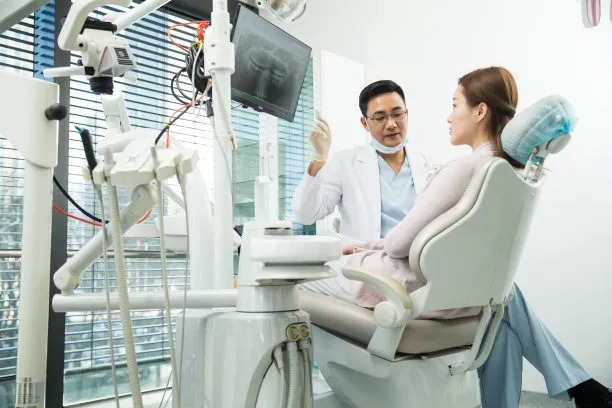The Essential Guide to Understanding What Happens When You Extract a Tooth and What to Expect Next
Summary: Tooth extraction is a common dental procedure often necessary to maintain oral health. Understanding the process and what to expect beforehand can alleviate anxiety and help patients prepare for post-operative care. This guide will break down the tooth extraction process into four key aspects: the reasons for extraction, the procedure itself, recovery expectations, and aftercare guidelines. Each aspect provides insight into making the experience smoother and more manageable, ensuring you feel informed and supported throughout the journey. By the end of this article, readers will have a comprehensive understanding of what happens during a tooth extraction and how to effectively care for themselves afterward.
1. Reasons for Tooth Extraction Explained

There are various reasons why a dentist might recommend tooth extraction. Commonly, wisdom teeth, which often become impacted, may require removal to prevent pain or infection. Additionally, severe decay or damage beyond repair can necessitate extractions. If the tooth poses a risk to surrounding teeth or the overall alignment of the mouth, extraction may also be deemed the best solution.
Another common reason for extraction is periodontal disease, which can cause significant gum inflammation and bone loss. The health of surrounding teeth is crucial, and sometimes, extracting a severely affected tooth can help preserve overall oral health. Understanding these reasons can reduce anxiety and help patients feel more accepting of the extraction process.
Lastly, tooth extractions may be necessary for orthodontic purposes. Dentists may recommend the removal of certain teeth to create space and ensure the proper alignment of remaining teeth, which contributes to healthier bites and smiles. Being aware of these reasons can provide context to why a tooth extraction may be crucial for long-term dental health.
2. The Tooth Extraction Procedure Details
The tooth extraction procedure typically begins with the administration of anesthesia to ensure that the patient remains comfortable and pain-free throughout the process. Depending on the complexity of the extraction, local anesthesia or sedation might be used. This allows for a painless experience, as the dentist works to remove the tooth.
Following anesthesia, the dentist will carefully loosen the tooth using specialized instruments before gently removing it from the socket. This process may vary in duration based on the tooths position and condition. For impacted or broken teeth, additional steps may be necessary, which could include surgery to access the tooth roots, but your dentist will discuss these possibilities with you beforehand.
Once the tooth is extracted, the dentist will give specific instructions regarding post-operative care, which is critical to ensure efficient healing. Understanding the extraction process helps alleviate fear and prepares patients for what they will experience during the procedure.
3. Recovery Expectations After Extraction
Recovery after a tooth extraction is an essential stage in the process. Its normal to experience some discomfort and swelling in the first few days following the extraction. Patients often receive pain medications, and its advisable to follow instructions regarding their use to manage any discomfort effectively.
Swelling typically peaks around the 48-hour mark and will gradually subside after. Applying ice packs on the outside of the cheek during the first 24 hours can help alleviate swelling and discomfort. Its equally important to keep your head elevated during the recovery phase to reduce pressure on the extraction site.
Post-operative bleeding is common but should be controlled with gauze provided by the dentist. Patients should avoid vigorous rinsing or sucking through straws, as these actions can dislodge the blood clot necessary for healing. Following these recovery guidelines can make a considerable difference in healing smoothly after an extraction.
4. Essential Aftercare Guidelines for Patients
Proper aftercare can significantly impact the healing process. After a tooth extraction, diet restrictions are necessary, particularly during the first few days. Soft foods like yogurt, applesauce, and broth allow the mouth to heal without further irritation. It is essential to stay hydrated as well, avoiding hot beverages that could aggravate the surgical site.
Oral hygiene is still crucial; gentle brushing should resume the day after the procedure. Avoiding the extraction site is vital to prevent disruption of healing tissues. Rinsing with salt water after 24 hours can help keep the area clean, but patients should be cautious to avoid vigorous motions that could disturb the blood clot.
Regular follow-ups with your dentist are critical to ensure that healing proceeds as expected. If any unusual symptoms, such as prolonged pain or excessive swelling, develop, contacting the dentist promptly is encouraged. Following these guidelines will facilitate a smooth post-extraction recovery and contribute to overall oral health.
Summary: Understanding the process of tooth extraction, from the reasons behind it to post-operative care, equips patients with the knowledge to navigate this common dental procedure with confidence. With the right preparation and care, recovery can be a seamless experience, paving the way for improved dental health and comfort. This compiled article from Vickong Dental aims to shed light on tooth extraction, ensuring readers feel informed and supported. Always consult with your dentist for personalized advice and care.
This article is compiled by Vickong Dental and the content is for reference only.



